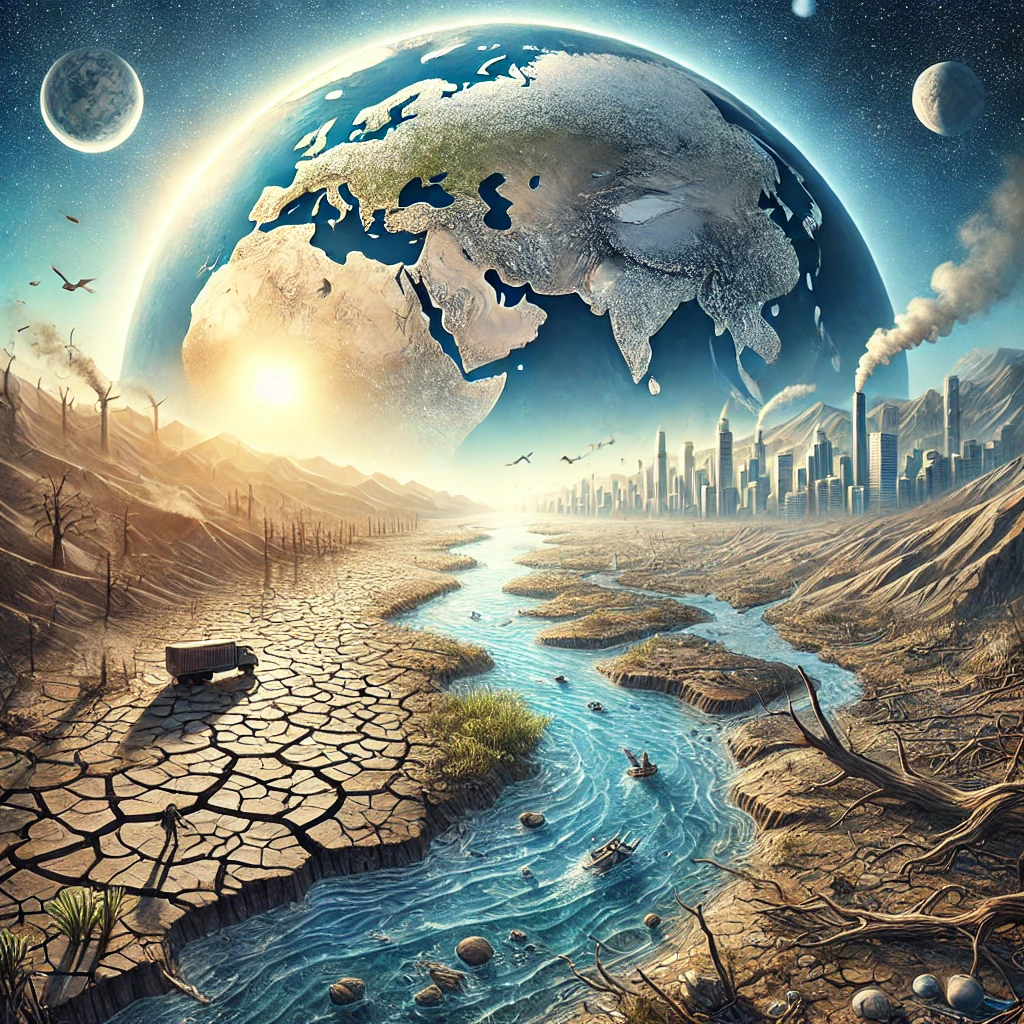The 2023 Global Water Resources Report has painted a stark picture of the planet’s water crisis, with the year being marked as the driest for rivers in over three decades. This concerning trend brings into sharp focus the need for immediate and concerted efforts in water management and climate resilience. The implications are profound, not only for the environment but also for economies, communities, and food security worldwide.
A Deteriorating Water Landscape
Rivers have always been the lifeblood of civilizations, playing a crucial role in sustaining agriculture, industry, and urban development. Yet, 2023 witnessed rivers across the globe reaching alarmingly low levels. In India, major rivers like the Ganges and Yamuna have seen unprecedented shrinkage during the dry months, significantly impacting both agriculture and domestic water supplies. The situation is similarly dire in parts of Europe, Asia, and North America, where major water sources have been under severe stress due to prolonged droughts.
This decrease in river water levels is part of a broader issue of freshwater scarcity, a problem that has been exacerbated by human activities like deforestation, over-extraction, and pollution. Climate change has further intensified this crisis, with altered weather patterns leading to either too much water in the form of destructive floods or prolonged dry spells that sap rivers of their flow.
Climate Resilience and Policy Urgency
The 2023 report underlines the urgency of addressing these issues through stronger climate resilience measures. The droughts affecting rivers around the world are closely tied to climate change, which has caused temperatures to rise, ice caps to melt faster, and rainfall patterns to become erratic. This has led to more frequent and severe droughts, as well as a decrease in snowpack, which traditionally feeds many rivers.
A key takeaway from the report is the need for global policymakers to prioritize sustainable water management. This includes implementing systems for better water storage and distribution, reducing wastage, and protecting watersheds that recharge rivers and aquifers. Governments must adopt stringent policies that balance the need for development with environmental conservation, ensuring that water resources are protected for future generations.
Global and Local Consequences
The economic impact of this water crisis cannot be overstated. Agriculture, which consumes 70% of global freshwater, has already begun to feel the strain. In India, a country heavily reliant on its rivers for irrigation, crop yields have been hit hard, raising concerns about food security and inflation. Additionally, industries that depend on water for production, such as energy and manufacturing, are also facing challenges, with many plants operating below capacity due to water shortages.
Beyond economics, the social ramifications are just as alarming. Water scarcity disproportionately affects vulnerable communities, particularly in developing nations where infrastructure and resource management systems are already under pressure. As water becomes more scarce, it fuels conflicts and migration, further destabilizing already fragile regions.
Solutions: From Technology to Conservation
In response to this growing crisis, innovations in water management have become increasingly critical. Countries like Israel have led the way with technologies such as drip irrigation, desalination, and water recycling, which allow for more efficient use of available water resources. These technologies need to be adopted on a global scale, particularly in water-stressed regions.
At the same time, conservation efforts must be intensified. Protecting wetlands, forests, and watersheds is crucial for maintaining the natural systems that support water cycles. Reforestation, for example, can help restore river flows by replenishing the soil and allowing for greater water retention. Moreover, individuals and communities must be educated on water conservation practices, such as rainwater harvesting and reducing water waste in daily activities.
Conclusion: A Call to Action
The 2023 Global Water Resources Report is a wake-up call. The dire state of the world’s rivers and freshwater systems is a clear indication that the time for action is now. Policymakers, industries, and individuals alike must come together to address this pressing issue before it is too late. Climate resilience, sustainable water management, and technological innovation are no longer optional—they are essential for ensuring that future generations inherit a world where water flows freely, and ecosystems thrive.
In the words of the report, “Water is the essence of life, and without it, all forms of development will come to a standstill.” It is up to us to ensure that this lifeblood of our planet is protected.
Tags: Global Water Crisis, Climate Resilience, Water Management, Drought, Rivers, Conservation, Freshwater Scarcity, Environmental Policy, Agriculture Impact, Technology and Innovation.
Focus Keyphrase: 2023 was the driest year for global river







